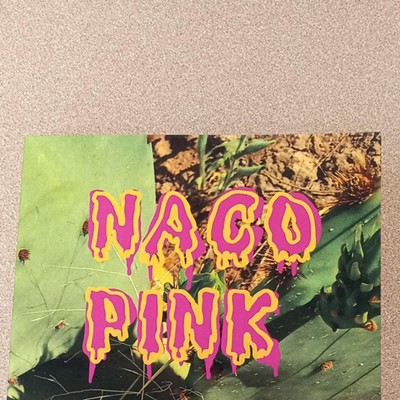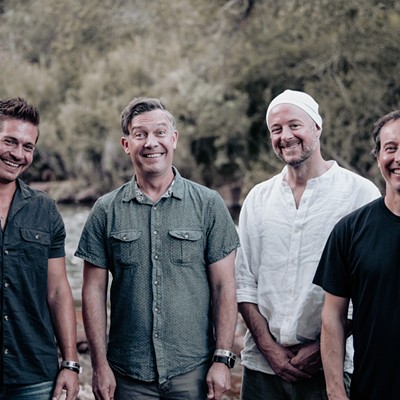The three architects who did the most to bring modernism to Tucson were Art Brown, William Wilde and Nicholas Sakellar.
That's the gospel according to Anne M. Nequette and R. Brooks Jeffery, authors of the indispensable book, "A Guide to Tucson Architecture" (UA Press, 2002).
"Those three were the pioneers of modernism in Tucson who transported it and ADAPTED it to the extreme climate of the desert," Jeffery wrote in an email this week.
This Saturday, on the last day of Tucson Modernism Week, architecture fans can learn about the work of Sakellar (5 p.m.) and of Wilde and his wife and partner, Sylvia Wilde (3 p.m.), in lectures taking place in a building designed by Brown, the dramatic Faith Lutheran Church at 3925 E. Fifth St. At the end of the day, celebrants can party at a reception in Sakellar's well-loved Murphy-Wilmot Library, 530 N. Wilmot Road.
And the following weekend, on Sunday, Oct. 18, during the popular American Institute of Archetechts Home Tour of Architecture Week, fans of Brown can visit a house that he designed. Located in the Catalina Vista neighborhood, the relatively modest brick house embodies Brown's ingenious response to the problem of building in the desert. Known as the Ball/Paylore House, it has a roof overhang that serves as a carport to the hexagonal-shaped house. Moveable shade screens can be shifted seasonally to ward off the sun during the heat of summer and to welcome it in during the cool winters.
"The sliding sun shade is such a kick," says Rob Miller, head of the UA College of Architecture, who lived in the house his first summer in Tucson. "The house spills around a central heart. It's designed really cleverly."
Jeffery, a UA professor of architecture and director of the Drachman Institute, agrees.
"I love Arthur Brown because a) he was an inventor and b) he was focused on functionalism and the innovative use of available and inexpensive building materials," he says.
The two overlapping events, Tucson Modernism Week (Oct. 2 to 10) and Architecture Week (Oct. 10 to 18), have some goals in common. Both try to bring awareness to ebb and flow of architectural styles in the Old Pueblo through lectures and tours, and also prod Tucsonans into making thoughtful choices for the future.
Both groups highlight homegrown architect Judith Chafee, the late, great designer who merged the clean lines of modernism with regional aesthetics—and deep knowledge of the desert climate.
Chris Evans and Christopher Domin, who's writing a book on Chafee with Kathryn McGuire, both lecture on Chafee at Faith Lutheran on Saturday, at 9 a.m. and 1:30 p.m., respectively, under the auspices of Tucson Modernism Week. Then, on Thursday, Oct. 15, at 5:30 p.m. at the Tucson Museum of Art, Domin gives a second Chafee talk, under the aegis of Architecture Week.
Modernism Week zeroes in on the playful exuberance of Tucson's mid-20th century architecture, while Architecture Week grapples with the whole sweep of the city's history.
"Our theme is past and present," says architect Ryan Rapucci, one of the Architecture Week organizers. "Where Tucson was, where it is now and where it will be."
An Architecture Week tour of Barrio Libre, aka Barrio Historico, at 9 a.m. on Saturday, Oct. 17, will take a look at Tucson's oldest neighborhood. Architect John Messina, an expert in the architecture of Sonora, will lead groups past the grand adobe casas that share the streets with what remains of Tucson's classic 19th-century Sonoran row houses. Until urban renewal, there were blocks and blocks of these efficient courtyard homes, stretching clear across Tucson's downtown.
The same day, at 10 a.m., Brooks Jeffery takes visitors forward in time, in a tour of the West University Historic District. Dating mostly from 1890 to 1930, its varying bungalow styles – with front porches and sloping roof—reflect the tastes of the American "immigrants" who turned up long after the Territory switched from Mexican to U.S. rule.
Later that afternoon, at 4 p.m., a downtown tour takes stock of the revitalization that's turned the once-sleepy city center into a night-life hub. Michael Keith of the Downtown Tucson Partnership as well as architects from FORS Architecture + Interiors will lead guests along Congress Street and Sixth Avenue, stopping in at the new Johnny Gibson's Downtown market, and a slew of restaurants and bars, from HUB to Diablo Burger to Playground. The tour ends, naturally, with a "drinks reception" and talk at Connect Coworking.
The Sunday home tour, 9 a.m. to 4 p.m., on Oct. 18 moves from the early modernism of Arthur Brown to the "desert modernism" largely created by graduates of the UA College of Architecture.
Highlights include Les Wallach's Arroyo House, a showplace two-part foothills home connected by an enclosed bridge spanning an active wash. Ibarra Rosano Design Architects hew more closely here to the Brown aesthetic in their modest Six Courtyard House in the working-class neighborhood north of Salpointe High.
Frank Mascia of Collaborative Design Group Architects shows off his family compound of three small houses in midtown, and Rob Paulus opens up a new creation, a near-Foothills house that's "our gem," Rapucci says. "It's built into the mountains."
For times, dates and fees for Tucson Modernism Week, see tucsonmod.com. Most lectures are $5.
For info on AIA's Architecture Week 2015, see aiasouthernarizona.org and https://squareup.com/market/aiasouthern-arizona/aia-architecture-week. The guide-led tours on Saturday, Oct. 17, are $15; the self-guided home tour on Sunday, Oct. 17, is $20.












